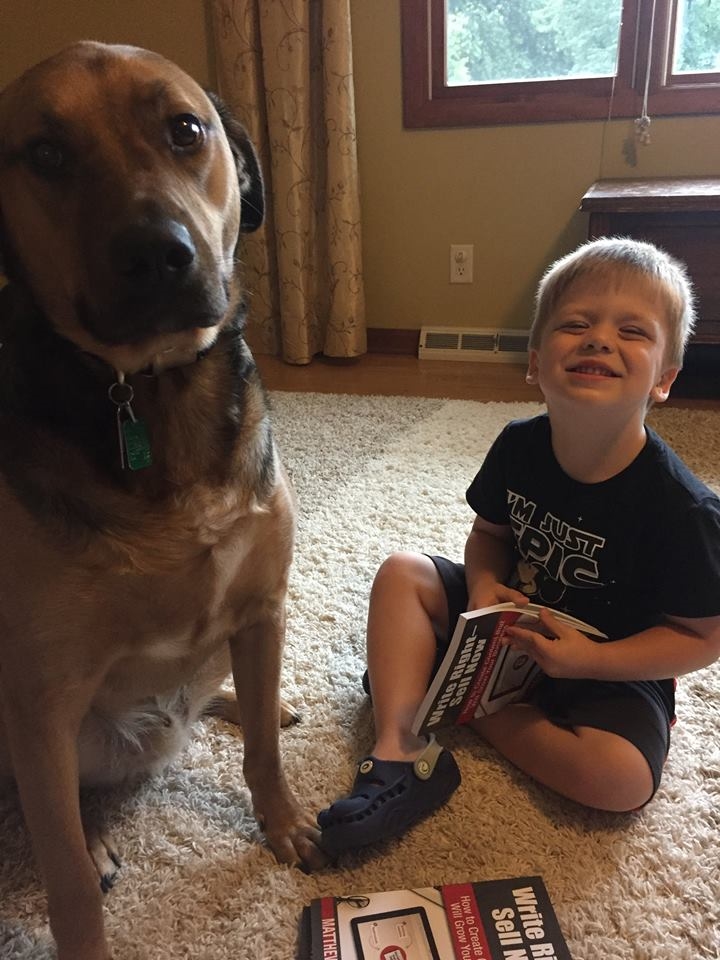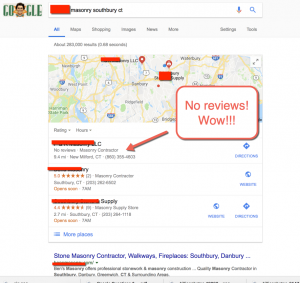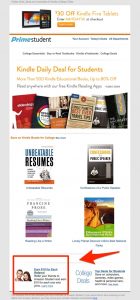— August 22, 2017
A list of considerations you should make before you start a blog in 2017.
A website without a blog is essentially a home without windows. At the minimum, it is an under-lit home that allows very little light in. It’s a simple analogy, really.
People have questions regarding your industry, whether it’s b2b or b2c. They search for answers. Your blog post may just be what they find – your window. You have the ability to lure customers in with a limitless amount of valuable content.
This creates an audience for your business you otherwise would never have. This allows you to publish work that establishes you as an expert, and works to build trust between you and your reader.
I still see businesses that haven’t yet started blogging. While the competition is a little more fierce now, it’s not too late. Below are some considerations you should make before you start a blog.
Before You Start a Blog, Platform Strategies
All That Hype About WordPress, That’s Real
A self-hosted WordPress.org platform is really the way to go for your blog in 2017. With this set up, you will have complete branding control and design flexibility. You will have the ability to create a search (SEO) strategy that can truly benefit your business.
Other blog platforms like Blogger and Tumblr, or web-building platforms like Wix, limit your ability to market your own website or blog – making it virtually impossible to see the full benefit of your efforts.
More than a quarter of the web is built using WordPress, and that number continues to grow. That’s because of the freedom and flexibility that comes with having full control over your marketing.
On-Site Blogging
As blogging came into form, many businesses used their static websites to link out to their off-site blog. The problem with this strategy is they didn’t really reap the benefits of their strategy. It becomes harder to draw readers from their blog into their website, and have full control over the experience they created for their audience.
The alternative to that is the creation of an on-site blog. This allows you to see the full benefits from your search and marketing strategies. If you are attracting new readers through your posts, those readers will be spending time directly on your website.
Make it Mobile Friendly
There are plenty of mobile friendly, or responsive, blog themes available through WordPress. Mobile traffic is rivaling desktop traffic. There can also be search engine penalties at play for blogs that aren’t mobile friendly. A mobile friendly site makes consuming content easier for your audience.
A Measured Effort
Your blog should be full of experiments. It should be a series of trial and error efforts to reach the largest number of people possible. So, the question becomes, how do you know it’s working? The answer: Google Analytics.
Analytics will show you how many visitors and page views you’ve had on your site. It will show you what posts are the most popular, and what sites your traffic came from. It’ll show you what pages traffic drops off from, as well.
Google Analytics can give you a roadmap for improvement if you know how to use it right. It’s hard to know what to improve if you’re not measuring the results of your efforts.
Ah, the Search Engines
When you use WordPress, you can combine it with a plugin such as Yoast to help your search engine efforts. Yoast will tell you all the places that your content needs to be tweaked or improved in order to curry favor with the search engines.
Even if you know what you’re doing when it comes to optimization, Yoast can help make sure you’re not leaving items off your checklist before you hit publish. It’s a good tool to add to your platform.
Those are some of the platform strategies to consider before you start a blog in 2017. Incorporating these tools and resources can help you succeed in growing your platform. But there is a considerable amount of competition out there these days. What you publish matters just as much as how you publish it.
Before You Start a Blog, Editorial Strategies
Knowing What You Want to Say
Having a key message is important to consider before you start a blog. Do a quick Google search. There’s probably someone out there writing within your industry. The competition is likely fairly steep.
Here are a few questions to consider:
- What makes you different?
- Why should people read your blog and not someone else’s?
- Why should people buy from you?
These questions are better to consider now, than as you sit down and begin staring at a blank computer screen. Write about what makes you different. As an example, I’ve written about what business owners, marketers or bloggers can learn from journalists.
As you write your content, try to find your unique angle and run with it. This unique angle will provide clarity to the above questions and help drive the direction of your content.
Finding Your Voice
In a similar manner, it’s always good to define your voice, and the voice of your business. This isn’t something that will emerge as you first start writing. It can take several posts before it begins to emerge.
Consider your industry. Someone in corporate accounting will likely use a different voice than someone trying to sell surfboards. However, it’s also important to remain authentic. Talk to a reader of your blog the same way you would address a potential customer that you were drinking coffee with.
There is a significant difference between formal and professional. Most businesses don’t have to be formal, but they all need to be professional.
Incorporating Your Personal Brand
I’m a freelance copywriter, but I’m a lot more than that. I’m a parent. I’m a former journalist. I love playing with our dog, and I am developing a growing obsession with all things technology.

These things creep into my writing. My son and our dog were featured in my book. I’m reading books that range from industry-specific non-fiction, to novels to collections of essays. I’ve tinkered with ideas on how to incorporate these widespread ideas into my writing.
Social media can always use a bit more of a human touch. Your blog can always use a bit more of a human touch. To be honest, this is a crucial area of blogging, and one that I’ve struggled to master. We are all complex individuals that are more than the individual roles we play. The more we are able to let our worlds collide, the better.
When perspective clients know you’re obsessed with Cubs baseball, it can make for fun small talk. Or maybe they’ve seen pictures of my adorable dog. That’s fun to talk about too. These are the things that make your post different than the previous search results your reader has been through.

Developing Blog Ideas
Ideas come from everywhere. Simply thinking about what makes you different can drive ideas. But also, what are you passionate about? What do you want people to know about your industry?
These are important questions, too. It’s important to read and consume as much information as you can, both inside and outside your industry. This gathering of information can help drive your ideas. Your blogging efforts will only be as strong as the ideas that you develop.
Before you start a blog, try writing down 10 post ideas. This can start as a guiding list, but it will also serve as an indication of how much material there is for you to go on. Maybe you need to broaden the scope of your content. As you start to publish more posts, it’s always good to have an organized, running list of ideas. Speaking of…
Using an Editorial Calendar
Did you ever wonder how newspapers, magazines and websites keep their projects straight? Some of these organizations are publishing dozens of stories on a daily basis. The effort is staggering. They use an editorial calendar.
It’s simply a list of which posts go on what days. That’s it. But it can help you coordinate your blogging efforts with your larger marketing efforts. It can help you align your blogging with seasonal marketing.
On the most practical level, it helps you organize, and it helps as a layer of accountability by incorporating deadlines.
Frequency, Length
Blogging is about finding your delicate balance, and executing on what works for you. The frequency should be a balance between the need to stay top of mind with your audience, and producing quality material that enriches your relationship with your audience. Some mixture between once a month and once a week can be right for most businesses.
I had an editor one time who told me that the story should dictate the length. This is excellent advice. It’s much easier to read a thousand-word post discussing what type of car you should buy, than what type of bubble gum. So the nature of your business and your content should come into play.
That being said, the minimum length for Google to index your content is around 300 words. Google is also putting a premium on longer content at the moment. You may also want to use your analytics package to determine whether longer posts or shorter posts are driving more traffic or sales for you, and adjust accordingly.
Visual Content
Blog posts need compelling pictures. People are more likely to read online content that is visually friendly. Finding these pictures is probably more complicated than it should be.
There are plenty of free stock photo sites such as freeimages.com, Unsplash, or Pixabay. You’ll want to research the licensing before using a photo to make sure that they are free for your usage, and don’t require attribution.
Laying your post out in a visually friendly manner helps readers more easily consume your content:
- Shorter paragraphs
- Subheads
- Lists
- Multiple image
Conclusion
Keep at it. Keep writing. Keep trying. The competition is steep, and it can take a little while to figure out what works, as you continue with the writing process.
Keep these considerations in mind before you start a blog. You can do things to write and promote your blog more efficiently. Of course, hiring a freelance marketing writer is always an option as well.
Digital & Social Articles on Business 2 Community
(57)








